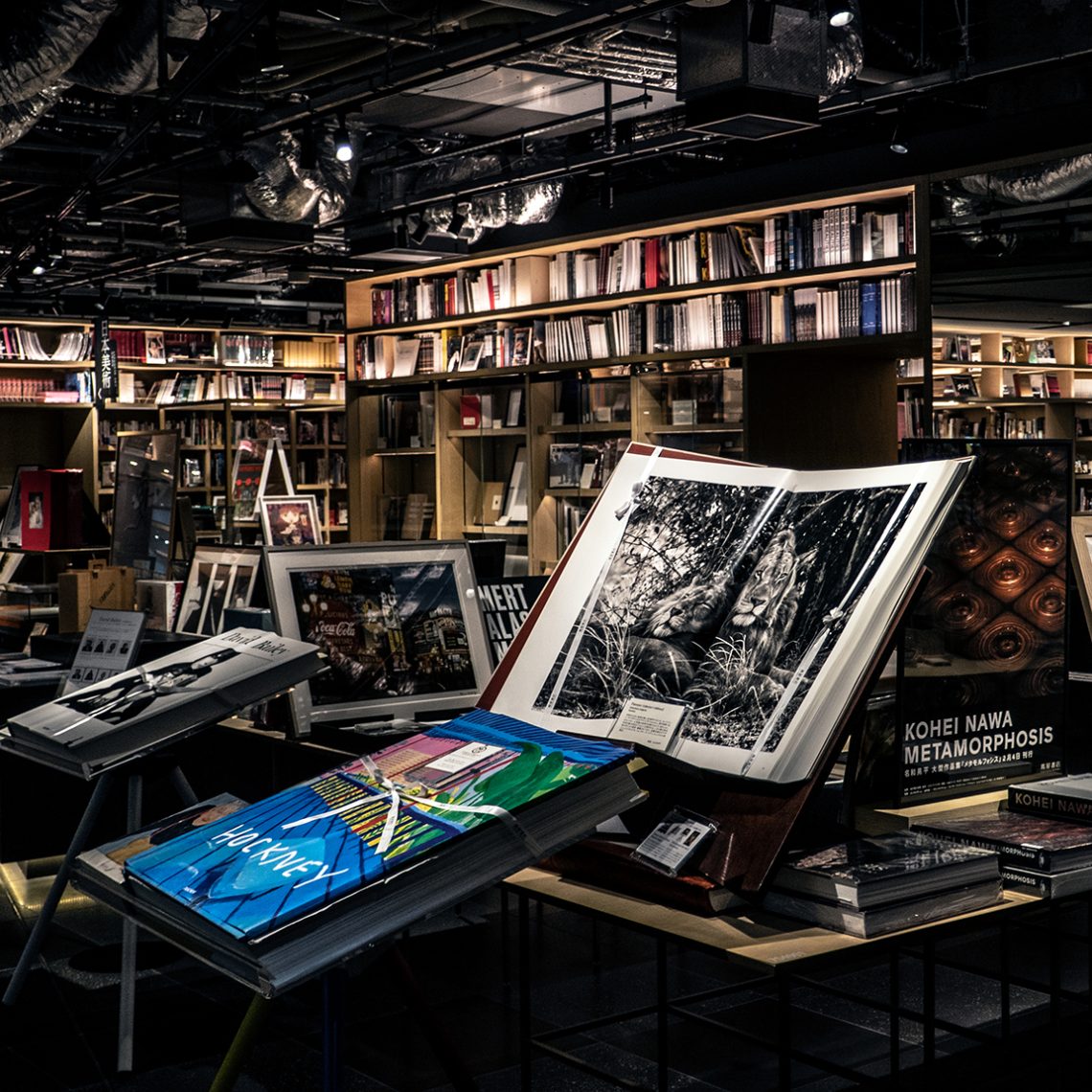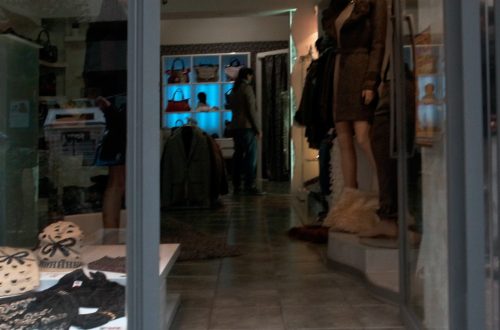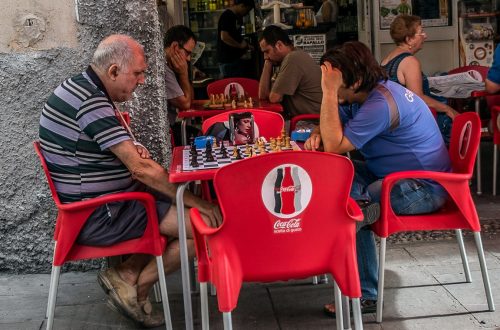
Tsutaya Bookstore@Ginza
Photographed inside the Tsutaya Bookstore in Ginza, Tokyo, this image celebrates the bookstore as a curated stage, where books are not simply stored but presented as artefacts. The frame is dense yet controlled, offering layer upon layer of shelves, display tables, and oversized art books. The eye is immediately drawn to the centre, where a large black-and-white wildlife photograph dominates—its scale and high contrast making it the de facto anchor of the composition.
Composition
The photographer has worked with a classic layered approach. Foreground tables angle toward the viewer, drawing them deeper into the mid-ground where the hero book sits open, and then further into the background shelves which fill the frame’s upper third. The interplay between vertical shelving lines and diagonal table angles prevents the image from feeling static. The choice to place the main book slightly off-centre adds energy and avoids the trap of a symmetrical but lifeless scene.
There is also a smart use of leading lines: the tilted books in the foreground act like arrows, guiding the viewer toward the photographic print at the heart of the image. Secondary points of interest—the Kohei Nawa book cover, the coloured Hockney volume—act as visual punctuation, keeping the composition from becoming monochromatic or overly busy.
Exposure and Light
Given the complexity of the lighting in Tsutaya Ginza—track spots, reflective surfaces, dark ceilings—the exposure is handled well. Highlights on the glossy pages are kept under control, avoiding the distracting glare that often plagues bookstore photography. The shadows in the ceiling and deep recesses of the shelves retain enough detail to convey depth without pulling attention away from the main display.
White balance is well-judged: the warm tones of the shelves are balanced by the cooler blacks of the ceiling and printed images, maintaining a neutral overall feel despite mixed lighting sources.
Technical Quality
Focus is sharp across the critical elements. The aperture appears small enough to hold both foreground books and background shelves within acceptable clarity, while still allowing a gentle fall-off that subtly prioritises the main display. Noise levels are low, indicating either careful ISO control or effective post-processing.
Framing is tight but not claustrophobic; it captures the atmosphere of abundance without tipping into visual chaos.
Narrative
What this photograph succeeds in doing is presenting the bookstore not merely as a retail space, but as a gallery—each book a curated exhibit. The presence of large-format art photography within the scene reinforces this blurring of bookstore and exhibition hall, something Tsutaya Ginza is known for. The image conveys a respect for books as objects of beauty, worthy of display and spotlight.
This is a photograph that balances craft and content. Technically sound, compositionally deliberate, and narratively clear, it not only documents a space but celebrates the cultural role of the bookstore in a city where commerce and aesthetics intersect daily.




